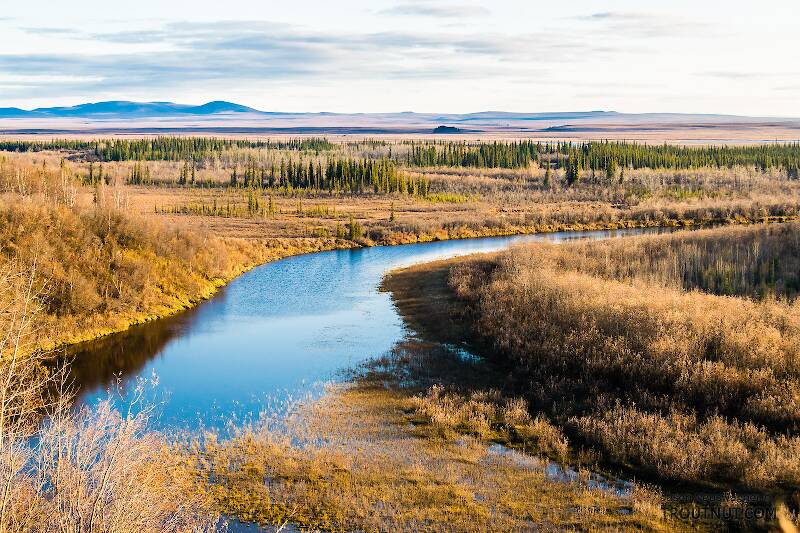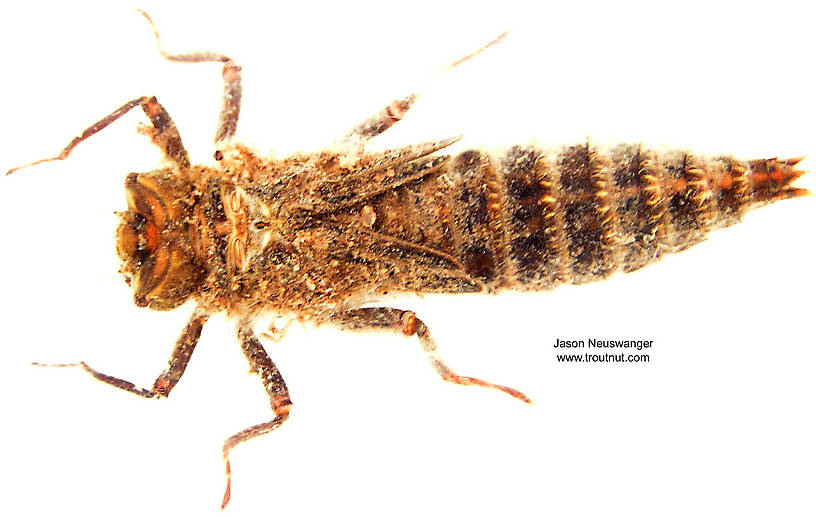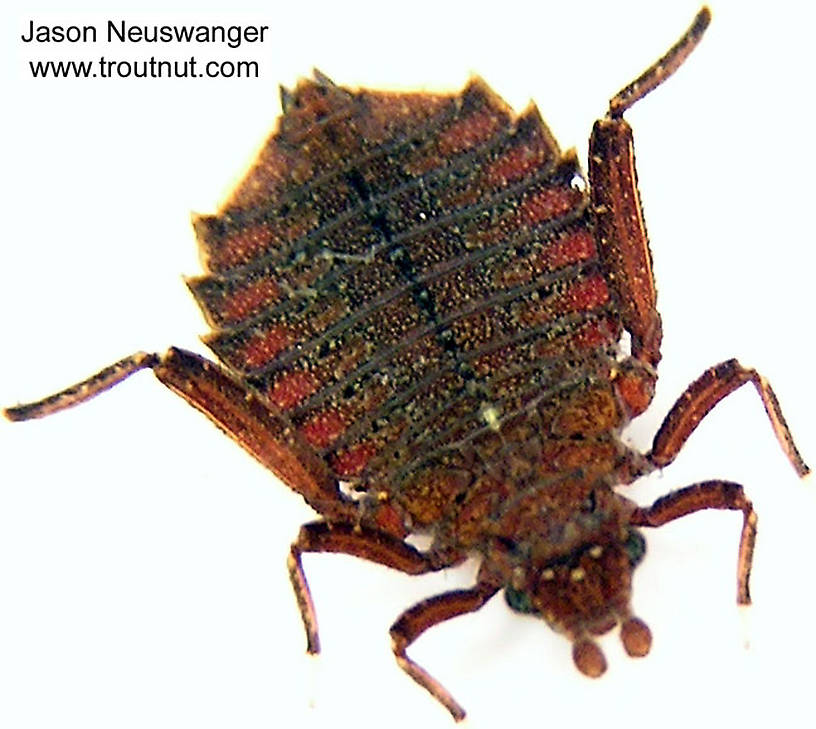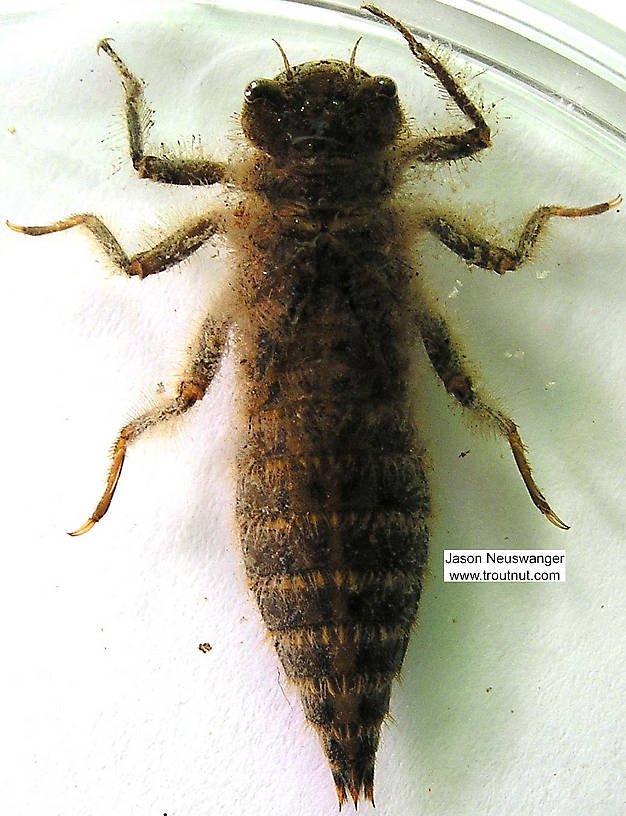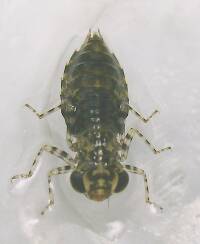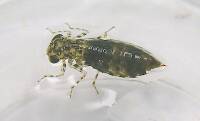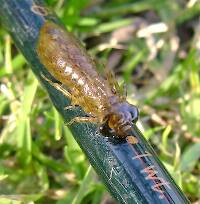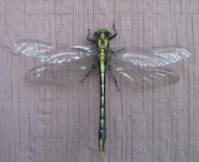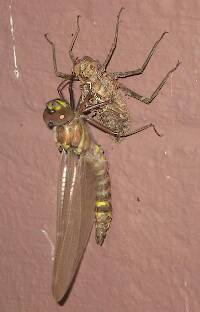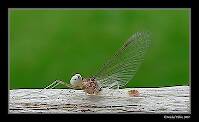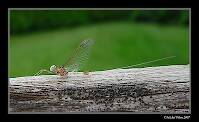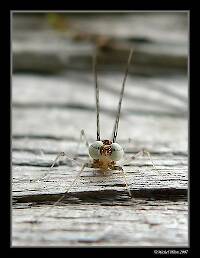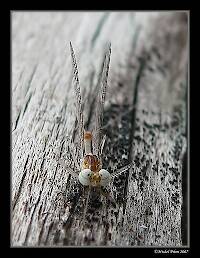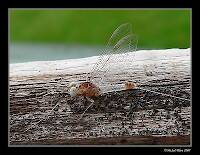
Blue-winged Olives
Baetis
Tiny Baetis mayflies are perhaps the most commonly encountered and imitated by anglers on all American trout streams due to their great abundance, widespread distribution, and trout-friendly emergence habits.
Featured on the forum

It's only barely visible in one of my pictures, but I confirmed under the microscope that this one has a prosternal horn and the antennae are mid-way between the eyes and front of the head capsule.
I'm calling this one Pycnopsyche, but it's a bit perplexing. It seems to key definitively to at least Couplet 8 of the Key to Genera of Limnephilidae Larvae. That narrows it down to three genera, and the case seems wrong for the other two. The case looks right for Pycnopsyche, and it fits one of the key characteristics: "Abdominal sternum II without chloride epithelium and abdominal segment IX with only single seta on each side of dorsal sclerite." However, the characteristic "metanotal sa1 sclerites not fused, although often contiguous" does not seem to fit well. Those sclerites sure look fused to me, although I can make out a thin groove in the touching halves in the anterior half under the microscope. Perhaps this is a regional variation.
The only species of Pycnopsyche documented in Washington state is Pycnopsyche guttifera, and the colors and markings around the head of this specimen seem to match very well a specimen of that species from Massachusetts on Bugguide. So I am placing it in that species for now.
Whatever species this is, I photographed another specimen of seemingly the same species from the same spot a couple months later.
I'm calling this one Pycnopsyche, but it's a bit perplexing. It seems to key definitively to at least Couplet 8 of the Key to Genera of Limnephilidae Larvae. That narrows it down to three genera, and the case seems wrong for the other two. The case looks right for Pycnopsyche, and it fits one of the key characteristics: "Abdominal sternum II without chloride epithelium and abdominal segment IX with only single seta on each side of dorsal sclerite." However, the characteristic "metanotal sa1 sclerites not fused, although often contiguous" does not seem to fit well. Those sclerites sure look fused to me, although I can make out a thin groove in the touching halves in the anterior half under the microscope. Perhaps this is a regional variation.
The only species of Pycnopsyche documented in Washington state is Pycnopsyche guttifera, and the colors and markings around the head of this specimen seem to match very well a specimen of that species from Massachusetts on Bugguide. So I am placing it in that species for now.
Whatever species this is, I photographed another specimen of seemingly the same species from the same spot a couple months later.

Troutnut is a project started in 2003 by salmonid ecologist Jason "Troutnut" Neuswanger to help anglers and
fly tyers unabashedly embrace the entomological side of the sport. Learn more about Troutnut or
support the project for an enhanced experience here.
This topic is about the Insect Order Odonata-Anisoptera
Dragonflies and damselflies are in the same order, Odonata, but they are taxonomically separated on an obscure level not built into this site, the suborder. Dragonflies are in the rarely mentioned suborder Epiprocta, and within that suborder is the infraorder Anisoptera, the scientific name by which they're best known. None of that will help you catch trout, but it explains what the hyphen in this page's name is all about.Example specimens
AlexC on Jun 11, 2007June 11th, 2007, 4:06 am EDT
Whle fishing the West Branch of the Ausable River this weekend I came across an area that had dozens of empty dragon fly nypmh shucks on the rocks. There was a small feeder stream right by this area.
I fished another spot where there was a small feeder stream, and again, there were dozens of empty dragonfly nymph shuck here too.
These were the only places I saw any empty shucks and was just curious if it wasn't just a coincidence that both areas where the nymphs chose to emerge were near feeder streams?
I fished another spot where there was a small feeder stream, and again, there were dozens of empty dragonfly nymph shuck here too.
These were the only places I saw any empty shucks and was just curious if it wasn't just a coincidence that both areas where the nymphs chose to emerge were near feeder streams?
Bugs Rule
GONZO on Jun 11, 2007June 11th, 2007, 8:05 am EDT
Hi Alex,
I'm sure there are reasons why aquatic insects utilize certain emergence sites and not others, but those reasons aren't always obvious. I've often noticed large olive-brown dragonfly nymphs emerging in late May and early June on some of my favorite Pocono streams, but I've never been curious enough to investigate the species or their habits. And I didn't notice an association with feeder streams. There's just so much hatching at that time of year that they didn't seem important. Have you ever imitated the nymphs and fished them around the emergence sites?
I'm sure there are reasons why aquatic insects utilize certain emergence sites and not others, but those reasons aren't always obvious. I've often noticed large olive-brown dragonfly nymphs emerging in late May and early June on some of my favorite Pocono streams, but I've never been curious enough to investigate the species or their habits. And I didn't notice an association with feeder streams. There's just so much hatching at that time of year that they didn't seem important. Have you ever imitated the nymphs and fished them around the emergence sites?
AlexC on Jun 11, 2007June 11th, 2007, 11:51 am EDT
Although I have some wool versions in my box, I've never used dragon nymphs for trout. Like you said, there's always so much other activity going on I ignore them. I've always thought of dragonfly emergences as more of a scattered occurrence, where one would emerge here, one there, one over there, etc. But this was more like an actual migration and I wonder if the trout might take advantage of "high" numbers of them moving towards a certain area.
One other similarity was that both sites were 5-30 feet upstream of the feeder. I didn't see any downstream. Guess from now on when I'm fishing near any feeders I'll have to drift some dragon nymphs upstream of them and see if anything happens
One other similarity was that both sites were 5-30 feet upstream of the feeder. I didn't see any downstream. Guess from now on when I'm fishing near any feeders I'll have to drift some dragon nymphs upstream of them and see if anything happens
Bugs Rule
GONZO on Jun 11, 2007June 11th, 2007, 12:07 pm EDT
I'm not sure how an area upstream of a feeder would constitute a draw for emerging nymphs, but you never know. Give those dragonfly nymphs a try if you get a chance. I'm sure trout grab them whenever they can, and concentrations of the nymphs should get the attention of some of the local bullies.
WildcatRob on Dec 9, 2007December 9th, 2007, 2:55 am EST
Hi,
Since Dragonflies are basically stillwater critters, probably the creek creates a relative still pool where the dragon nymphs congregrate. They probably crawl the shortest distance. Also while they will molt almost anywhere they like to latch into emergent veggies.
BTW ondonta being stillwater critters there is a substantial body of stillwater literature on them as well as other such critters. One of many sources is 'The Gilly' A Flyfisher's Guide Edited by Alfred G. Davy ISBN 0-88925-638-1.
Might also add: If one discards resivoirs and other rapidly fluctuating lakes, much of the best fishing comes from stalking along the shore. Kinda like stream fishing, though there must be much more emphasis on quality and style of the flys and manipulation of the cast.
WildcatRob
Since Dragonflies are basically stillwater critters, probably the creek creates a relative still pool where the dragon nymphs congregrate. They probably crawl the shortest distance. Also while they will molt almost anywhere they like to latch into emergent veggies.
BTW ondonta being stillwater critters there is a substantial body of stillwater literature on them as well as other such critters. One of many sources is 'The Gilly' A Flyfisher's Guide Edited by Alfred G. Davy ISBN 0-88925-638-1.
Might also add: If one discards resivoirs and other rapidly fluctuating lakes, much of the best fishing comes from stalking along the shore. Kinda like stream fishing, though there must be much more emphasis on quality and style of the flys and manipulation of the cast.
WildcatRob
WildcatRob on Dec 9, 2007December 9th, 2007, 2:57 am EST
Hi,
Since Dragonflies are basically stillwater critters, probably the creek creates a relative still pool where the dragon nymphs congregrate. They probably crawl the shortest distance. Also while they will molt almost anywhere they like to latch into emergent veggies.
BTW ondonta being stillwater critters there is a substantial body of stillwater literature on them as well as other such critters. One of many sources is 'The Gilly' A Flyfisher's Guide Edited by Alfred G. Davy ISBN 0-88925-638-1.
Might also add: If one discards rapidly fluctuating lakes, much of the best fishing comes from stalking along the shore. Kinda like stream fishing, though there must be much more emphasis on quality and style of the flies and manipulation of the cast.
WildcatRob
Since Dragonflies are basically stillwater critters, probably the creek creates a relative still pool where the dragon nymphs congregrate. They probably crawl the shortest distance. Also while they will molt almost anywhere they like to latch into emergent veggies.
BTW ondonta being stillwater critters there is a substantial body of stillwater literature on them as well as other such critters. One of many sources is 'The Gilly' A Flyfisher's Guide Edited by Alfred G. Davy ISBN 0-88925-638-1.
Might also add: If one discards rapidly fluctuating lakes, much of the best fishing comes from stalking along the shore. Kinda like stream fishing, though there must be much more emphasis on quality and style of the flies and manipulation of the cast.
WildcatRob
Quick Reply
Related Discussions
Topic
Replies
Last Reply
0
Dec 7, 2006
by Troutnut
by Troutnut
I agree with the nymph and emergence coments above
In the Mayfly Species Litobrancha recurvata by Beardius
In the Mayfly Species Litobrancha recurvata by Beardius
0
Aug 1, 2008
by Beardius
by Beardius
10
Apr 26, 2012
by Dejackson
by Dejackson
6
Sep 22, 2006
by Troutnabout
by Troutnabout
5
Oct 17, 2007
by Pilonm
by Pilonm

